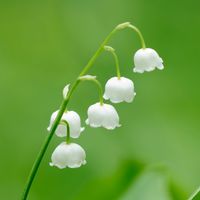Desert Willow Seed Germination – When To Plant Desert Willow Seeds


Those living in USDA zones 7b through 11 are often enchanted with desert willow and for good reason. It’s drought tolerant, easy to care for, and grows rapidly. It also lends a sense of grandeur to the landscape with its willow-like leaves and fragrant pink to lavender trumpet-shaped blossoms that attract our pollinating friends: the hummingbirds, butterflies, and bees! Right now, your interest is piqued and you’re wondering, “How do I go about growing desert willow from seed?” Well, you’re in luck, because this just so happens to be an article about planting desert willow seeds! Read on to learn more.
Desert Willow Seed Propagation
The first step when planting desert willow seeds is to acquire the seed. After the desert willow’s showy flowers bloom, the tree will produce long, 4 to 12 inch (10-31 cm.) narrow seed pods. You will want to harvest the seeds in late summer or early fall when the pods turn dry and brown, but prior to the pods splitting open. When you split the dried pods open, you will discover that each individual seed pod contains hundreds of tiny oval brown hairy seeds. You are now ready for desert willow seed propagation. Please note: Some gardeners opt to harvest all the seed pods from the tree purely for aesthetics, as some feel the seed pods give the tree a shaggy appearance over the winter months and frown upon the litter the pods leave under the tree. There are seedless varieties of desert willow in existence for people with this mindset. Art Combe, a southwestern plant expert, created such a cultivar and it is known as Chilopsis linearis ‘Art's Seedless.’ Other uses for seeds: You may want to consider leaving some of the pods on the tree for the birds who seek them for forage. Another option would be to set aside some of the pods to brew with dried flowers for a medicinal tea. You have the seeds, so now what? Well, now it’s time to consider desert willow seed germination. Unfortunately, desert willow seeds will lose their viability quickly, perhaps even by the following spring. While you could store the seeds in a refrigerator over winter with the intention of direct sowing them into the ground after the last spring frost, your best chance of success is to plant the seeds while they’re freshest. So, with this in mind, right after harvest is when to plant desert willow seeds. Desert willow seed germination can be improved by soaking the seeds a few hours prior to sowing either in water or a mild solution of vinegar. Sow the seeds no deeper than ¼ inch (6 mm.) deep in flats or nursery pots. Keep the soil relatively moist and within one to three weeks, desert willow seed germination will take place. When seedlings produce two sets of leaves, or are at least 4 inches (10 cm.) in height, they can be transplanted to individual one-gallon pots filled with a well-draining soil mix and time release fertilizer. Be sure to grow the container plants in strong sunlight. You can plant your desert willow in the ground as soon as spring or, more ideally according to some, grow the plants in containers for at least a full year before planting in the ground. When planting your young desert willow, be sure to let it transition to outdoor life by hardening it off, then situate it in a location that receives full sun with well-draining soil. Please note: If you reside in zones 5 and 6 you may wonder if growing desert willow from seed is an option for you. Surprisingly, it is! Even though they have been traditionally rated for growing zones 7b to 11, the USDA now suggests that desert willow is more cold hardier than once believed and have documented instances where the tree has grown in zones 5 and 6. So why not give it a try?!!
Sign up for the Gardening Know How newsletter today and receive a free copy of our e-book "How to Grow Delicious Tomatoes".

Shelley Pierce was a writer for Gardening Know How, contributing to hundreds of articles for the site.